本文
Aikawa Gold and Silver Mine : From Meiji era onward : Sado City, Niigata Pref. Japan
- Home
- Gold and Silver in Sado
- Nishimikawa Placer Gold Mine
- Tsurushi Silver Mine
- Aikawa Gold and Silver Mine : Edo period
- Aikawa Gold and Silver Mine : From Meiji era onward
In the Meiji era, Aikawa Gold and Silver Mine and Tsurushi Silver Mine merged into "Sado Mine" with the federal government running operations starting in 1869 before selling the rights to the Mitsubishi Corporation in 1896. During this period, both Western engineers invited by the government and Japanese engineers who had studied abroad came to Sado and introduced advanced technology from the West such as excavation of vertical shafts to connect horizontal tunnels, and mechanization for transporting ores. These technologies greatly increased the amount of gold and silver produced, and Sado Mine was reborn as a leader in modernized Japanese mines.

Mining scene with rock drills, Property of Golden Sado Co.,Ltd
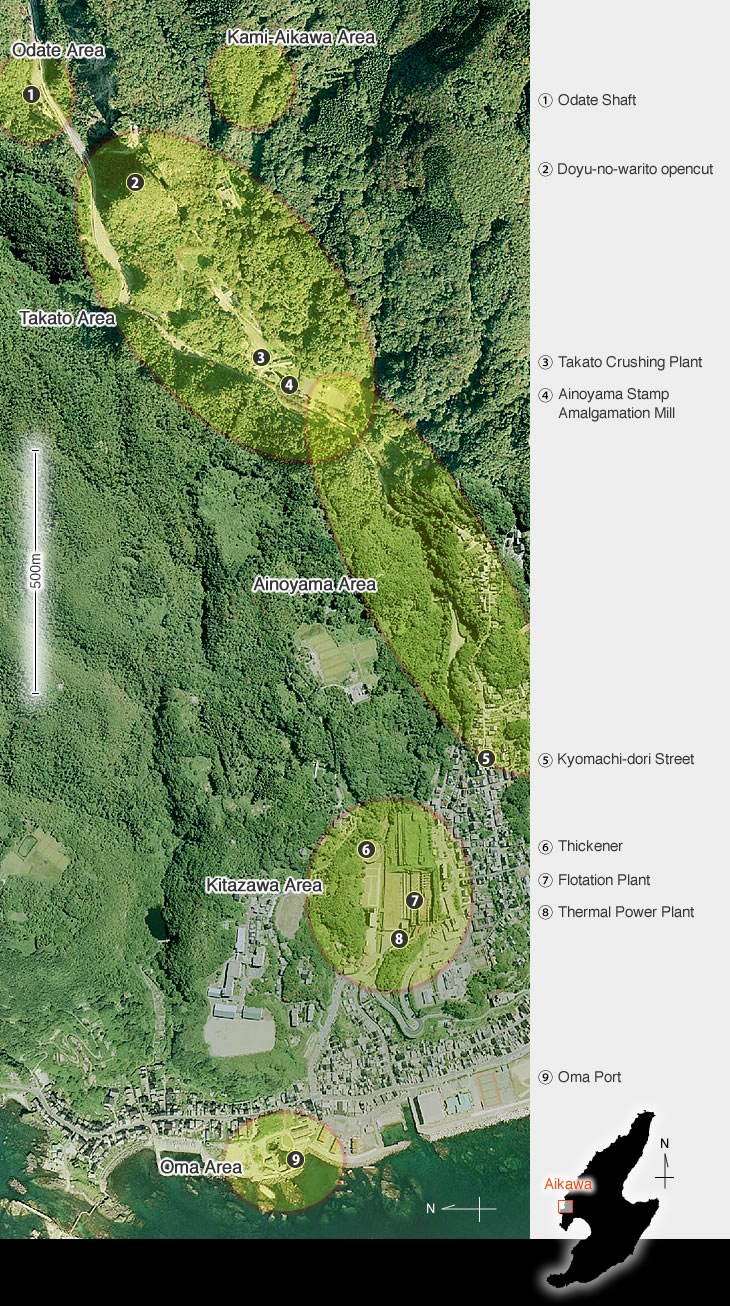
Odate Shaft
The Odate Shaft was the first vertical shaft made with the guidance of a German engineer along with the advent of Western technology in 1877. Inside the shaft remains an American-made air compressor as well as a whim that was installed in 1939. The headframe was built in 1938.
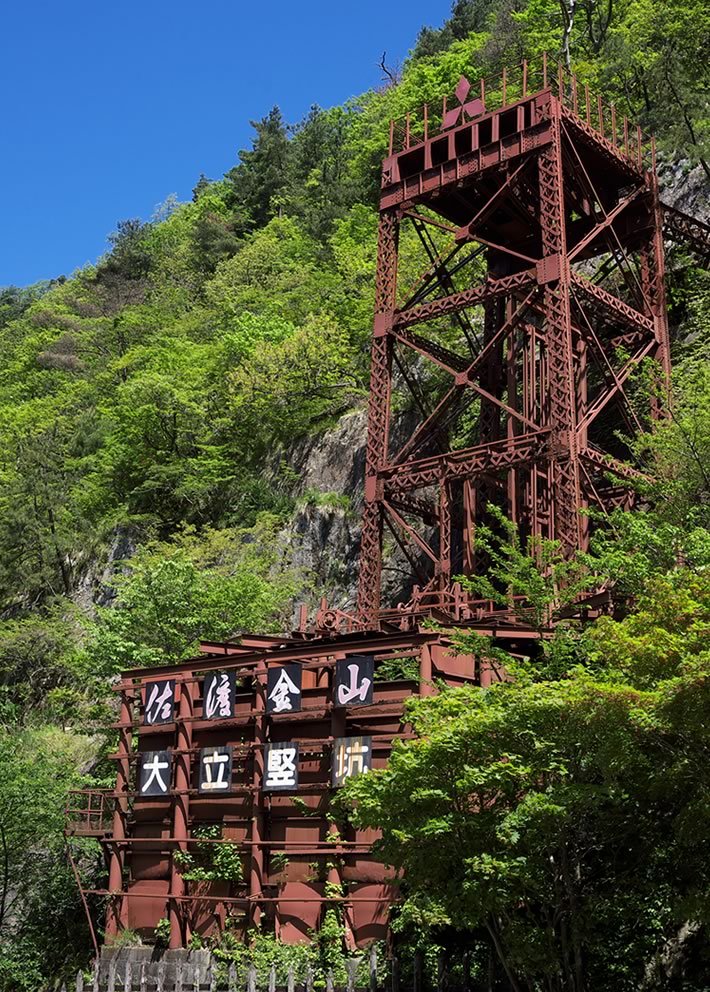
Odate Vertical Shaft Headframe © Hoichi Nishiyama
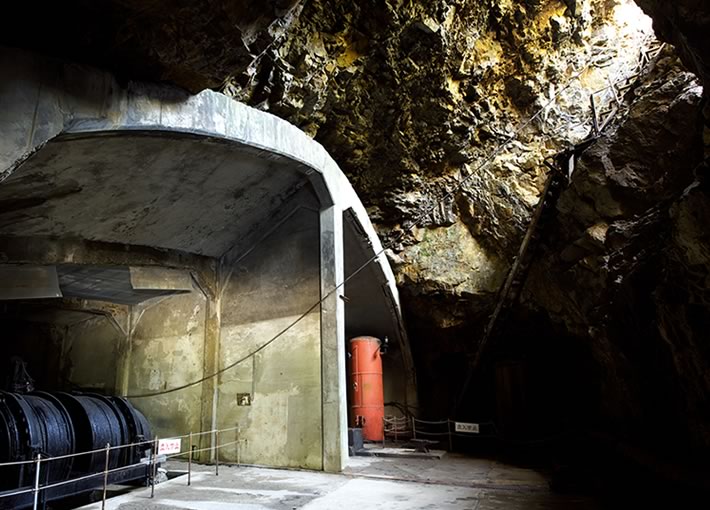
Odate Vertical Shaft Winch House © Hoichi Nishiyama
Takato Crushing Plant
Takato Crushing Plant was built in1938 and was used until its closure in 1989. After being washed, rocks are crushed and then classified into three types.(high-grade ore, middle-grade ore, and low-grade ore). The high-grade and middle-grade ores were carried to the ore storehouse by belt conveyor. The low-grade ore was transferred to a stamp amalgamation mill for further grinding and amalgamation(technique of using mercury to extract gold). There were about 200 grinding machines installed by the turn of the 20th century at this mill. It is said to have had a capacity of processing 200 tons of ore per day.
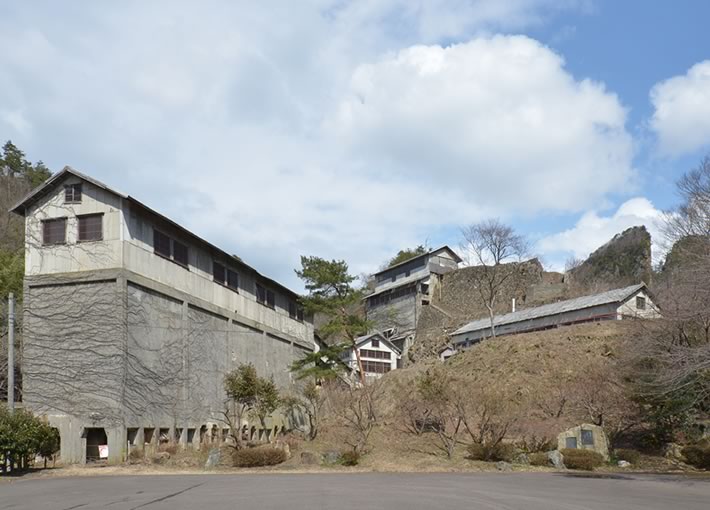
Mining facilities at Takato area © Yoshihiko Ono
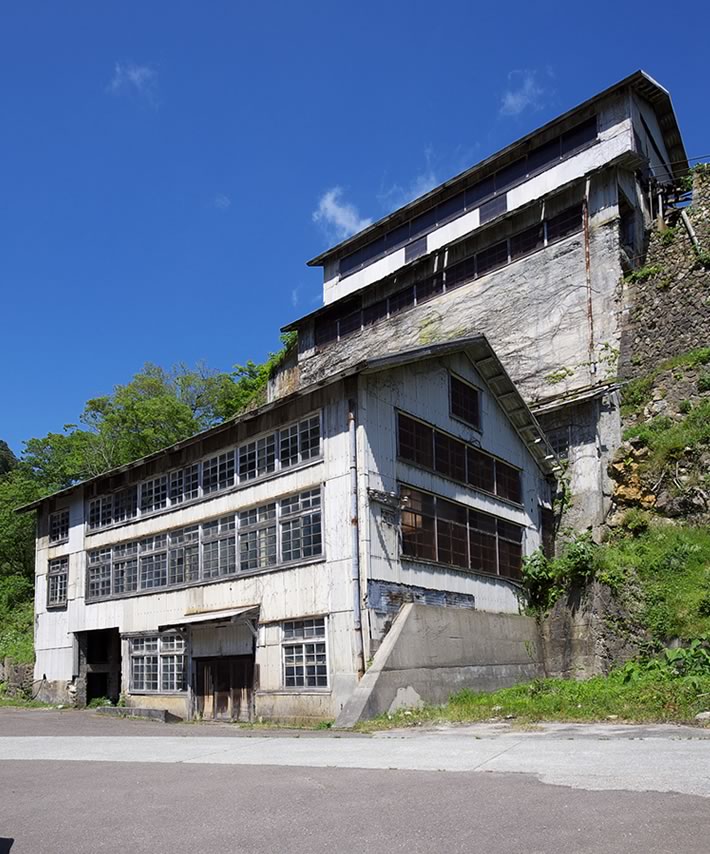
Takato Crushing Plant © Hoichi Nishiyama
Kitazawa Flotation Plant
Kitazawa Flotation Plant is a system to separate minerals and waste, and was once the largest plant of its kind in East Asia in 1930s. Following modernization in the late 19th century, Sado Gold and Silver Mine's production volume drastically increased. In order to counteract economic blockade during the Second Sino-Japanese War, the the national government implemented the production enhancement plan in 1937 and the processing capacity of 70,000 tons per month at this plant.
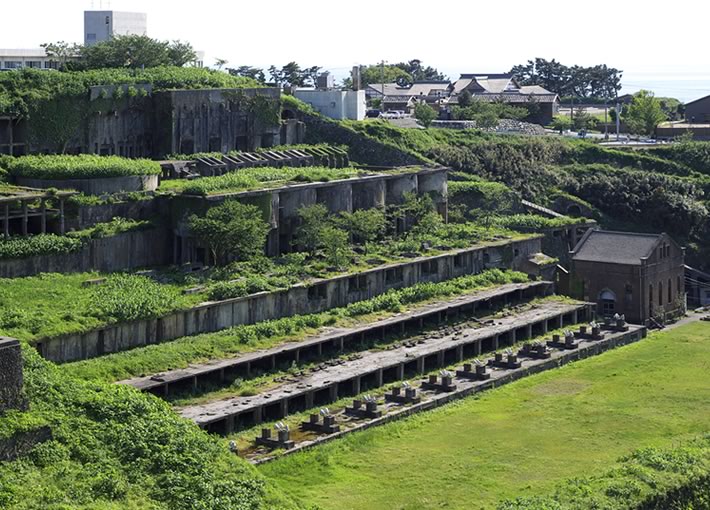
Kitazawa flotation plant(present), © Hoichi Nishiyama
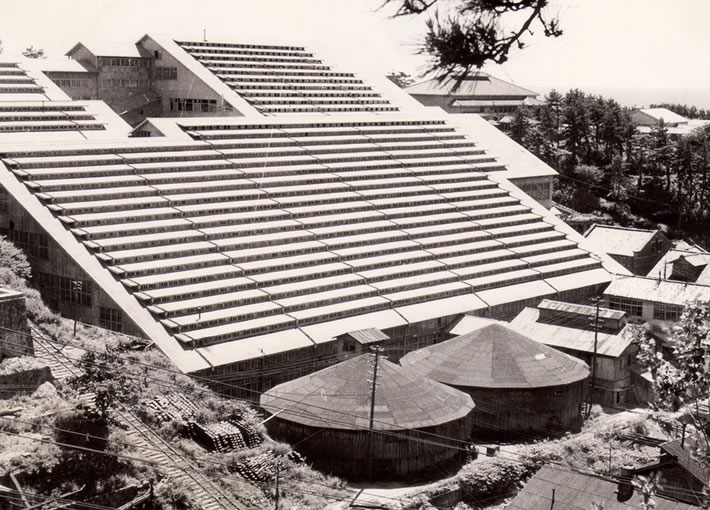
Kitazawa flotation plant around 1945, Property of Aikawa Folk Museum
Thickener
The thickener was completed in 1940. It measures 50 meters in diameter. It was used to separate mine tailings and water.
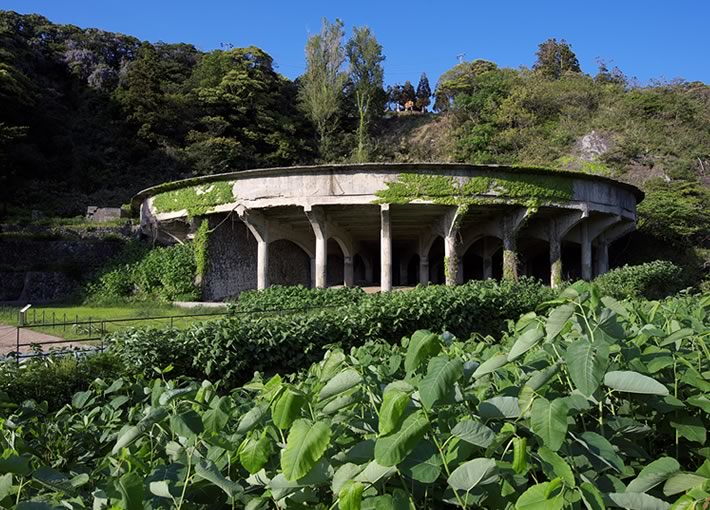
50 meter Thickner © Hoichi Nishiyama
Kitazawa Thermal Power Plant
Kitazawa Thermal Power Plant made of English bond brickwork was constructed in 1908 with a capacity of 500 kw in order to change the power by steam engines to the one by electricity for the facilities. There remains the building used as the generator house.
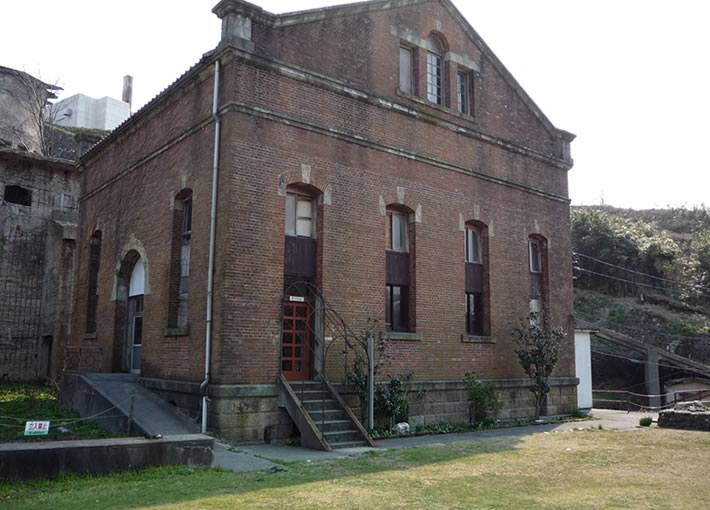
Kitazawa thermal power plant (present)
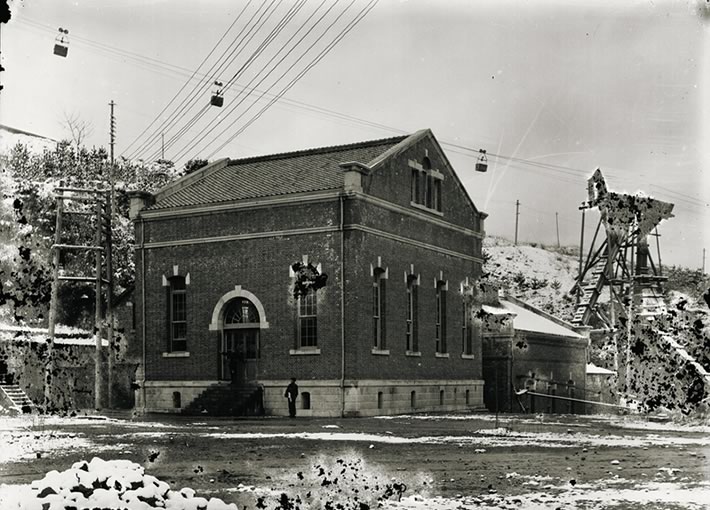
Kitazawa thermal power plant and cableways in the beginning of the 20th century, Property of Aikawa Folk Museum
Oma Port
Oma Port was constructed to facilitate the shipment of ores and materials used in mining. The construction began in 1887 and finished in 1892.

Oma port (present)
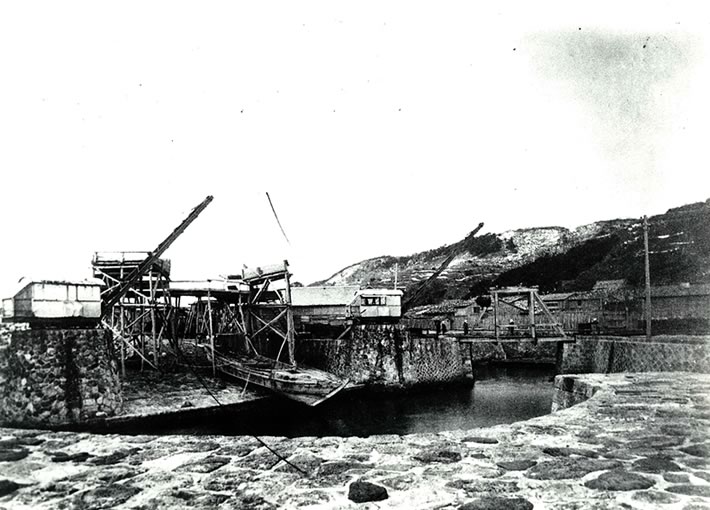
Oma port in the beginning of the 20th century, Property of Aikawa Folk Museum
Aikawa Folk Museum (former Property Administration Department Sado Branch Office)
Sado Mine had been modernized as a governmental mine since April 1869. It was decided to be incorporated in imperial property and put under control of Imperial Household Agency's Property Administration Department, Sado Branch in 1889.
This meant Sado Mine was positioned as a high-profit mines.
However, they decided Sado Mine to be sold off to the private organizations in September 1896. The mine was put under management of Mitsubishi in November 1896.
The branch office building built in 1889 was converted into the folk museum in 1956 and has been used to this day.
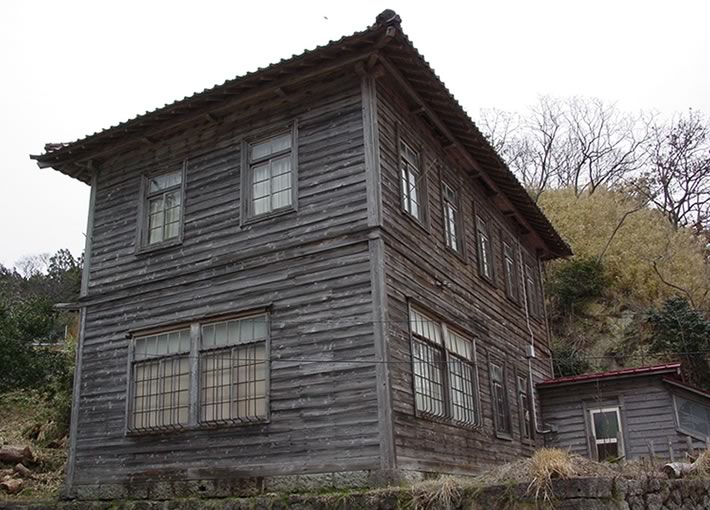
Aikawa Folk Museum (former Property Administration Department Sado Branch Office)



